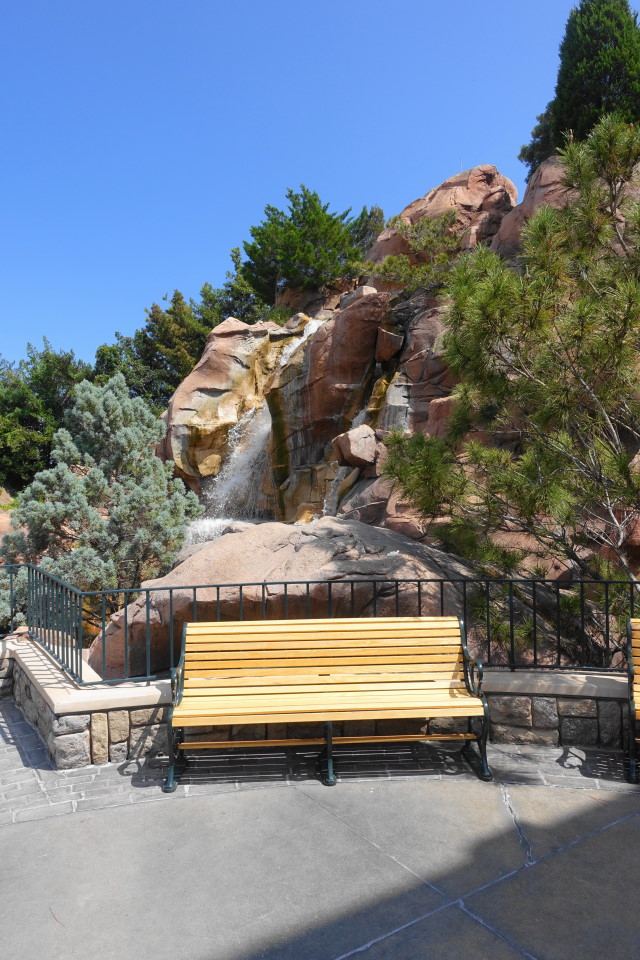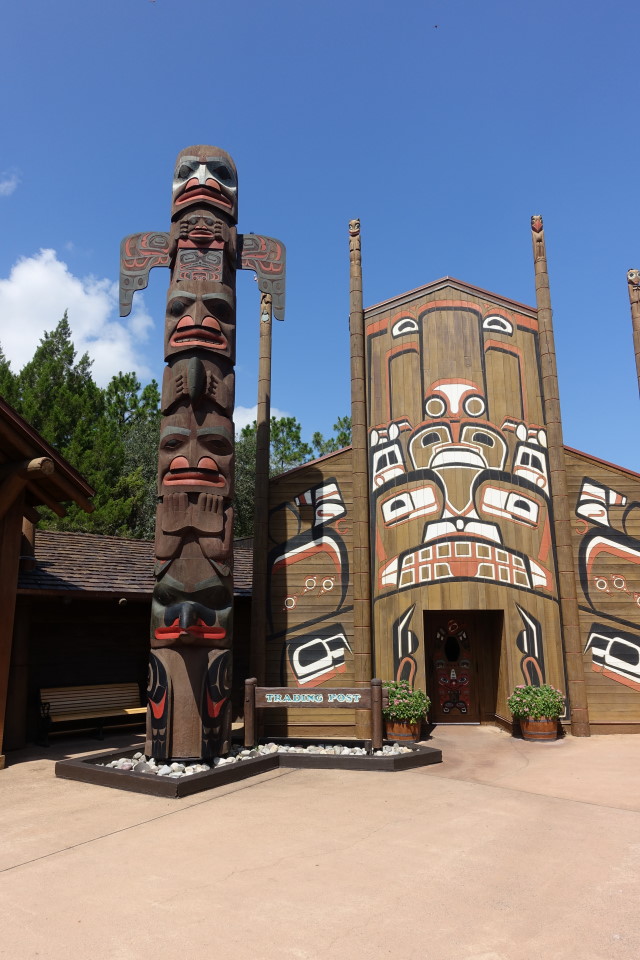A Friday Visit with Jim Korkis: The Canada Pavilion at Epcot
By Dave Shute
Welcome back to Fridays with Jim Korkis! Jim, the dean of Disney historians and author of Jim’s Gems in The easy Guide, writes about Walt Disney World history every Friday on yourfirstvisit.net.
THE CANADA PAVILION AT EPCOT
By Jim Korkis
There were three fiberglass totem poles in the Canada Pavilion at Epcot when it opened in 1982, but they were merely decorative and intended to broadly represent the art work of the Indian tribes of the Northwest.
Two of the poles were located in the landscaping opposite the main merchandise shop. The Northwest Mercantile was meant to represent the frontiersmen, trappers, prospectors, loggers and traders who inhabited the area during the earliest years of the country. These individuals were both French and English.
The outside of the building is decorated with authentic tools and snowshoes from the Canadian wilderness that were found by the Imagineers during their explorations. Part of the same building is the Trading Post meant to reference the Canadian Indian culture.
The Maritime Provinces of Prince Edward Island, Nova Scotia and New Brunswick are represented by the stone work on the level with shops above the trading post. On the left hand side, the architecture references the British influence (and was intended to house the never installed Canadian Tourism Center offices) and on the right hand side, the French influence.
The Hotel du Canada is patterned after the Chateau Laurier in Ottawa and the Hotel du Frontenac in Quebec. This French gothic design is reminiscent of the hotels that were built during the expansion of the Canadian railroad system.
The hotel building may look six to seven stories tall but is only three stories tall due to the use of forced perspective, with the bricks and windows (appropriately decorated with scaled down items) growing progressively smaller as the building rises.
Just beyond the hotel is some of the last work done by legendary Imagineer Fred Joerger to re-create a sense of the Canadian Rockies. Imagineers flew over the Canadian mountains and took pictures to develop a topographical map. They then created a Styrofoam model and used a computer to draw a three-dimensional picture showing horizontal and vertical features as well as depth.
An enlarged version was adapted and used as the master blueprint for the steel structure which was then covered with Gunite, the same cement used in swimming pool construction. Joerger and his crew then textured it all by hand including the thirty foot tall waterfall.
The challenge was having live trees in an artificial environment which was solved by using a containerized plant system where trees were planted in five foot deep planters with built-in irrigation and drainage systems. This also proved useful when the trees started to grow too large for the appropriate forced perspective and could be easily replaced.
In 1998, the Disney Company employed Tsimshian artist David Boxley from Alaska, noted for his decades-long creation of totem poles, to carve an authentic 30-foot totem pole to replace the one near the trading post.
During the carving process, the seven hundred pound red cedar log was laid on its side on a raised platform in front of the pavilion. Boxley laboriously worked on it and interacted with the guests until it was erected next to the Trading Post on April 1998.
This beautiful totem pole tells the tale from the Pacific Northwest Indians of Raven and Sky Chief. When the Trickster Raven came to earth, the people lived in the dark without shadows and without the sun, moon, or stars. Raven began a search for light. He noticed Sky Chief kept a bright light in his home hidden away in a box.
Raven transformed himself into a pine needle that floats into a stream just as the Sky Chief’s daughter is taking a drink. She unsuspectingly swallows that needle and Raven becomes a baby in her stomach and is born to the delight of Sky Chief.
Sky Chief brings out the box to show his “grandson” the golden ball of light. Raven grabs the shiny ball, turns back into his true form and flies up into the sky where he tosses the light so all people can enjoy the sun, the moon and the stars.
This is a variation of the same Raven story told on the totem pole in the lobby of the Wilderness Lodge. Like the story of Snow White or Cinderella, it was a popular story with many different versions.
Boxley placed two small green Hidden Mickeys under each of the bending elbows near the top of the pole.
* * * * *
Thanks, Jim! And come back next Friday for even more from Jim Korkis!
In the meantime, check out his books, including Secret Stories of Walt Disney World: Things You Never You Never Knew, which reprints much material first written for this site, and The Vault of Walt: Volume 4, and his contributions to The easy Guide to Your First Walt Disney World Visit, all published by Theme Park Press.
Follow yourfirstvisit.net on Facebook or Google+ or Twitter or Pinterest!!






0 comments
Comment by typing in the form below.
Leave a Comment | Ask a Question | Note a Problem